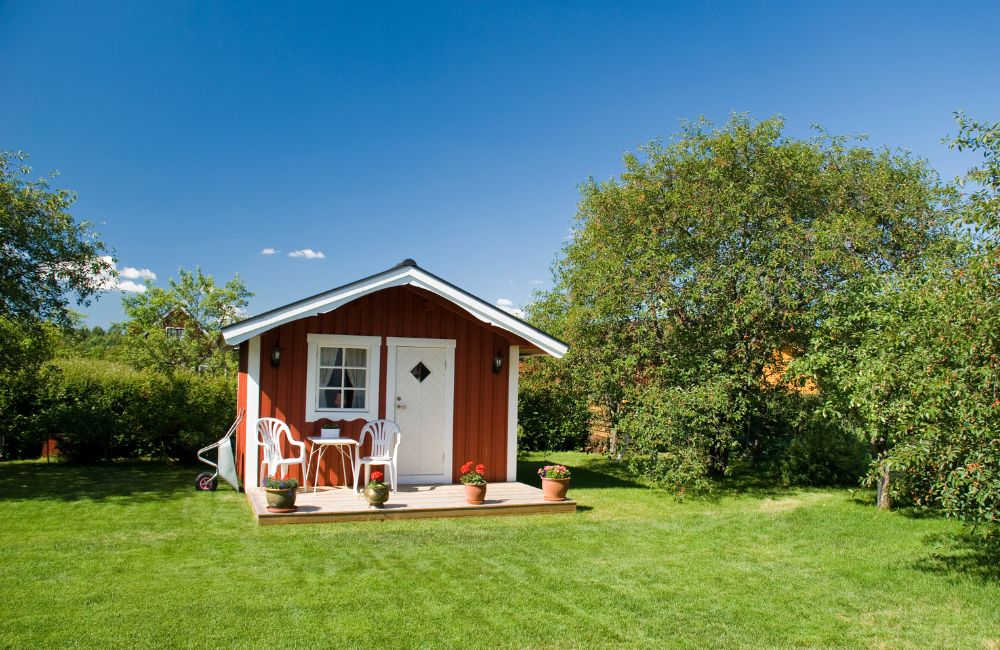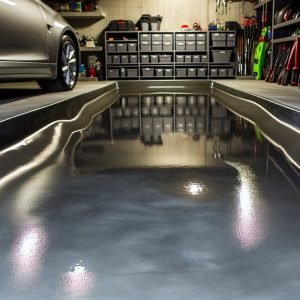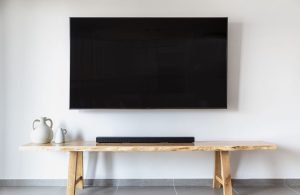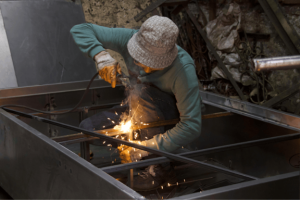Last Updated on November 3, 2025 by teamobn
Backyard guests deserve a real suite, not a foldout couch. A small detached unit adds privacy and value. You can build quickly with factory-built shells and smart site prep. We’ll cover budgets, floor plans, plumbing routes, and code basics. This guide focuses on a prefab guest house with bathroom that you can finish beautifully.
Contents
Key Takeaways
- A prefab guest house with a bathroom delivers fast build times and predictable budgets thanks to factory-built shells, standardized utilities, and clean set-day coordination.
- Smart space planning and wet-wall grouping keep plumbing short, improve performance, and make code compliance and maintenance simpler.
- Early sitework and utility planning for water, sewer or septic, power, and ventilation reduces delays and sets you up for comfortable stays or rental income.
What Is a Prefab Guest House
A prefab guest house is a small dwelling built off-site in a controlled factory. It’s delivered in modules or flat-packed panels. Think studio, home office, or detached in-law suite. The big gains are speed, predictable costs, and consistent quality.
Units arrive with framing, windows, roof, and exterior cladding already done. Some ship are near-finished inside. Others come as insulated shells you can complete. On-site, the house is built on a slab, skids, or piers. Crews secure it, weatherproof joints, and hook up utilities.
Choose a prefab guest house with bathroom when you want an actual self-contained space. Manufacturers pre-plan the wet wall, vent runs, and drain slope for code compliance. That keeps plumbing short and reliable. You set fixtures, connect water and waste lines, and then seal wet areas for longevity. Guests get real privacy and comfort.
Boxabl Casita: A Smart Prefab Home With a Full Bathroom
Boxabl’s Casita is a factory-built, modular home that unfolds on-site and arrives with a complete kitchen and full bathroom already installed. The Studio measures 19×19 feet, totaling 361 square feet, with 9-foot-6 ceilings. One and two-bedroom layouts expand livability while keeping installation fast and predictable for many homeowners.
- Full-size kitchen and full bathroom with factory-installed appliances, cabinetry, and countertops.
- Extra-tall 9’6″ ceilings, 6′ windows, and 8′ doors for a bright, open feel in a compact footprint.
- Factory-complete electrical and plumbing with efficient LED lighting for quicker setup.
- Built-in hookups for water, electricity, internet, and sewage to streamline onsite connection.
- Foldable modular design that enables faster installation than most traditional homes.
- Durable, easy-care vinyl flooring included as standard.
Ready to see if the Casita fits your site and budget? See the various prefab guest house with bathroom available to you at Boxabl today!
Space Planning and Bathroom Plumbing Basics
Small bathrooms feel bigger when layout and plumbing work together. Start with a clear plan that respects code, budget, and daily routines. Keep runs short, protect dry areas, and group fixtures for quiet, efficient service.
Map Your Footprint and Flow
Sketch the room with accurate dimensions. Mark windows, doors, and any low ceilings. Place the sink near the entry for quick handwashing. Keep the toilet discreet but accessible. Give the shower the most uninterrupted wall. Plan storage where you naturally reach. A good flow reduces clutter and moisture spread.
Door Swings and Clearances
Check door swing early. Pocket or outward-swinging doors free up floor space. Leave clear paths in front of the vanity, toilet, and shower. Avoid tight corners that trap knees or elbows. Mirrors need elbow room on both sides. A comfortable layout keeps cleaning simple and prevents scuffs and cracked tiles.
Wet Wall Strategy and Fixture Grouping
A wet wall carries supply and drains for multiple fixtures. Group the toilet, vanity, and shower along this wall to shorten runs and reduce penetrations. Stacked plumbing reduces costs in multi-story homes. It also quiets drains. Fewer turns mean fewer clogs and better water pressure. Plan access panels where valves sit for your prefab guest house with bathroom.
Supply Lines, Pressure, and Pipe Choices
Stable pressure matters more than peak flow. PEX handles tight routes with fewer joints and quicker installs. Copper gives durability and heat tolerance. Use shutoff valves at each fixture. Insulate hot lines to cut heat loss and condensation. Avoid long dead ends that let water sit. Balanced runs prevent temperature spikes mid-shower.
Drains, Slope, and Venting
Drains need steady slope to keep water and solids moving. Aim for roughly a quarter inch per foot unless local code says otherwise. Oversized traps slow flow and invite buildup. Every fixture must be vented to stop gurgling and sewer smells. Keep vents as straight as possible. Shorter, cleaner paths mean fewer callbacks.
Shower, Tub, and Toilet Placement
Showers like full-height walls for glass and waterproofing. Put controls near the opening so you can turn water on without getting soaked. Tubs benefit from a niche side for storage. Keep the toilet close to the wet wall for a shorter drain and stronger flush. Leave comfortable knee clearance in front of the bowl.
Waterproofing and Ventilation
Tile is not waterproof. Membranes and properly lapped corners are. Wrap the shower area with a continuous system before tile. Pitch floors to the drain and seal every penetration. Size the exhaust fan to the room volume and duct it outside. Run it during and after showers to clear steam and protect paint and grout.
Lighting and Power Coordination
Plan lighting with plumbing locations in mind. Keep cans and junctions out of major vent lines and chase spaces. Use damp or wet-rated fixtures where needed. Add task lighting at the mirror to avoid shadows. Place outlets with GFCI protection near the vanity. Good lighting makes small rooms feel larger and safer.
Storage That Stays Dry
Keep daily items within arm’s reach yet away from the spray. Recessed niches fit between studs on interior walls. Floating vanities preserve floor space and ease mopping. Tall cabinets anchor best on dry walls. Ventilate closed storage to prevent musty towels. Use hooks and rails near, not inside, splash zones.
Budget, Phasing, and Future-Proofing
Open the fewest surfaces possible by grouping work. Phase demolition and rough-in to protect finished areas. Choose valves and trim with easy-to-find replacements. Leave a capped tee for future upgrades like a bidet seat. Durable choices on the wet wall pay off for decades. A planned layout and sound plumbing of your prefab guest house with bathroom keep costs predictable.
Zoning, Permits, and Utility Access
Local rules keep projects safe and neighbor-friendly. A quick check now avoids fines and do-overs later. Plan your vertical planter boxes with zoning, permits, and utilities in mind from day one.
Check Local Zoning First
Look up how your property is zoned and what structures are allowed. Many councils and cities classify planters, trellises, and screens differently. Height, setbacks, and visibility near streets often apply. Corner lots can have stricter sightline rules. If you rent, review your lease and get written approval. Keep notes of every call or email. That paper trail helps if rules are unclear.
When Permits Are Required
Simple planters rarely need permits. Add height, a roof, or permanent footings, and rules can change. Anchoring to a wall or fence may trigger a review. Balconies and decks draw extra scrutiny. Submit a sketch with dimensions and materials. Show how loads transfer to framing. Ask about inspections. It’s easier to adjust on paper than after you build.
Setbacks, Height, and Neighbors
Most codes limit how close you can build to property lines. Measure before you set posts or casters. Many areas cap garden screens at a specific height. Keep tall tiers away from views and windows to prevent disputes. Choose finishes that match the street look. Share your plan with neighbors. Courtesy now keeps complaints off the table later.
Balconies, Decks, and Load Limits
Vertical planter boxes hold wet soil and water. That weight adds up fast. Check deck joist size and span tables or ask a qualified pro. Spread loads with continuous bases and wide feet. Avoid lining heavy boxes against a single rail. Add drip trays and splash guards to protect surfaces. Keep a clear path for doors and egress.
Water Supply and Irrigation
Plan how you’ll get water to the boxes without leaks. Balcony rules may ban hoses. Use micro drip with a backflow preventer and quick-disconnect fittings. Hide lines along posts and rails. Add shutoff valves you can reach in seconds. Place reservoirs in shade and above electrical outlets. Record flow rates and run times so you can repeat them each season.
Drainage and Runoff
What goes in must go out. Provide drainage holes and catch trays so water doesn’t spill onto neighbors or walkways. Angle trays slightly to the rear. Add geotextile liners to protect wood. In windy towers, use lighter watering cycles to limit overspray. Check stormwater rules if you’re draining to a shared area. Clean trays often to prevent algae and stains.
Utilities and Safe Digging
Freestanding frames with posts or anchors demand a utility check. Use your local call-before-you-dig service, such as 811 in the United States, before you drill or trench. Mark gas, water, power, and data lines. Keep fasteners clear of conduit in walls and fences. If you’re unsure, switch to surface-mounted bases. Avoid surprises by taking photos before you cover anything.
HOAs, Strata, and Building Management
Shared properties add another layer of rules. Review bylaws on façade changes, watering, and visible items on balconies. Many require neutral colors and tidy backs. Submit a simple plan with photos and a maintenance note. Promise regular cleaning and seasonal pruning. Vertical planter boxes that look intentional and well kept are approved faster and draw fewer complaints.
Utility Hookups and Sitework for Bathroom-Ready ADUs
Bathroom-ready prefab ADUs need careful site prep and dependable utility hookups. Plan corridors early, coordinate inspections, and budget trenching. Solid groundwork prevents delays, leaks, and rework while keeping inspectors aligned.
Site Survey and Utility Locate
Start with a detailed site survey that confirms property lines, setbacks, easements, and utility rights-of-way. Call your local “before-you-dig” service to locate underground lines. Mark proposed corridors for water, sewer, power, data, and gas.
Verify equipment access for trenchers or a mini-excavator. Photograph markings and sketch a simple map. Note who restores paving or landscaping after works. Good documentation keeps bids accurate and crews aligned.
Trenching, Depth, and Sleeving
Choose the shortest safe route that avoids trees, roots, and footings. Maintain required separations between water, sewer, electrical, and gas. Bed pipes in sand where specified and lay detectable warning tape above services.
Use conduit sleeves under driveways and paths. Follow local burial depths and frost-line rules. Backfill in compacted lifts to prevent settlement. Add a spare empty conduit for future data or power needs.
Water Service Sizing and Backflow
Size the water line for peak bathroom demand, including shower, basin, and toilet flushes. Upsize one nominal step for long runs or low pressure. Place a full-port shutoff where the branch leaves the main.
Add a pressure regulator if static pressure is high. Include an expansion tank if required. Install an approved backflow preventer near the meter. Insulate the run and consider heat trace in cold zones.
Sewer Connection or Septic Integration
Confirm if gravity flow is possible from the ADU to the tie-in point. Maintain continuous fall and add cleanouts per code. Use a packaged grinder or ejector pump when lifts or long flat runs make gravity unreliable.
For septic systems, verify tank capacity and drain field sizing for the new fixture counts. A separate tank may help. Provide a proper vent path and place a cleanout near the ADU wall.
Electrical Service, Conduit, and Load
Calculate the added load for a water heater, lighting, receptacles, and a ventilation fan. Install a dedicated subpanel in the ADU with GFCI and AFCI protection where required. Run underground-rated conduit with pull strings and proper markers.
Bond and ground the detached structure correctly. Keep low-voltage or data lines in a separate conduit. Consider sub-metering for rental use and future energy tracking.
Gas Line vs All-Electric Bath
Decide the energy path before trenching. Gas supports fast water heating but adds pressure testing, venting clearances, and leak checks. All-electric simplifies routing and can cut emissions.
Heat pump water heaters suit low operating costs but need space and condensate handling. Electric tankless needs ample amperage. Compare utility upgrade fees and payback. Add a solar-ready circuit or conduit if future electrification is likely.
Grading, Drainage, and Slope Protection
Shape the site to move water away from both the main home and the ADU. Create gentle swales or add a French drain where runoff concentrates. Protect open trenches from storms with berms and boards.
Place a vapor barrier and capillary break under slabs or platforms. Use gravel skirts and splash blocks along eaves. Stabilize disturbed soil with mulch or seed to prevent erosion and muddy tracking.
Inspection Steps and Set-Day Readiness
Schedule trench, rough-in, and pressure tests before backfill. Keep permit sets and specs on site for inspectors. Provide clear paths for trucks, cranes, and the ADU set crew.
Stage bedding, conduit, valves, and fittings beside each run. Cap terminations and label them. Take photos showing depth and materials. Save as-built drawings with measurements to fixed landmarks. Good records speed future repairs and support resale disclosures.
Conclusion
A prefab guest house with bathroom delivers comfort, privacy, and fast build times. You get turnkey plumbing, efficient layouts, and predictable costs. Maintenance stays low thanks to factory-built quality and standardized parts. Utilities and permits are easier to plan because specs are consistent. Add a prefab home to host family, earn rental income, or create flexible workspace.
FAQ: Prefab Guest House With Bathroom
- Do I need a separate water meter or just a sub-meter for the ADU bathroom?
- Separate metering lets the utility bill usage directly and can simplify rental accounting. It may trigger connection fees and a longer approval. A sub-meter is cheaper and quick to install. You’ll handle billing yourself but gain precise leak tracking and fair cost sharing.
- What’s a compact bathroom layout that still feels comfortable in a prefab guest house?
- Aim for about 5 ft by 7 ft for a full bath with a 32 in shower. Use a pocket door to free swing space. Keep at least 24 in clear in front of the toilet and 15 in from centerline to each side. A wall-hung vanity and curved shower rod improve movement.
- How do I handle wastewater if gravity fall isn’t possible to the main line?
- Use a packaged grinder or macerator pump to lift to the tie-in. Place a check valve and shutoff where the discharge leaves the unit. Add a high-water alarm and a dedicated circuit. Design a cleanout at grade so maintenance doesn’t require entering the ADU.
- Can I ventilate without cutting a roof hole on a flat-roof prefab?
- Yes. A through-wall fan ducted directly outside is common and code-compliant when sized correctly. Choose an HVI-rated unit with a humidity sensor and backdraft damper. In colder zones, consider an ultra-short duct or a compact ERV to limit condensation and heat loss.
- What extra protections help pipes and fixtures in freezing or very wet climates?
- Bury water lines below local frost depth and insulate exposed runs. Add heat trace with a thermostat on vulnerable sections. Use backflow and vacuum breakers rated for freeze zones. In wet sites, raise the ADU on piers or a slab with perimeter drains, then slope grade away to protect utilities.






